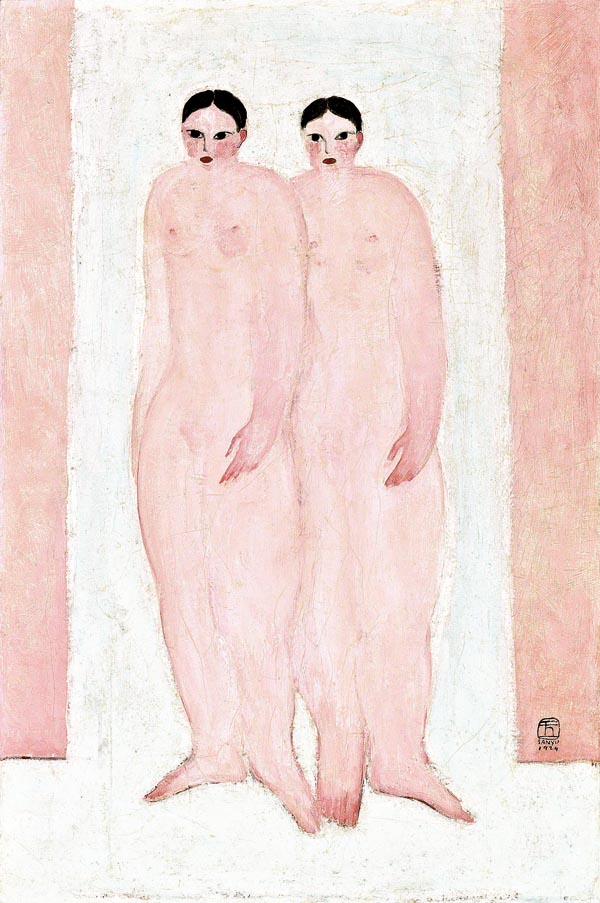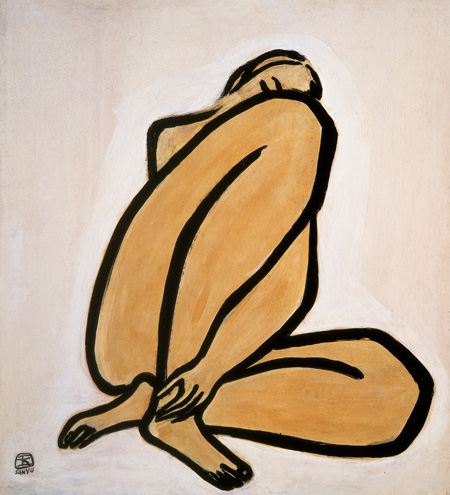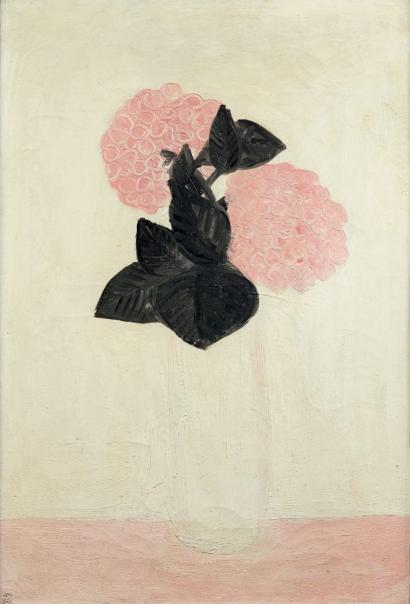Two large pink hydrangeas, in a white vase, February 1931.
Oil on canvas, signed lower left
Annotated on the back with the words "to keep for NY" 73 x 50 cm
Sanyu was born in 1901 to a wealthy family, owners of huge silk factories in the Chinese province of Sichiuan. As the last child of the siblings, Sanyu studied at home and spent his afternoons strolling around the family factories. There, he raved about the beautiful patterns and meticulous workmanship, which refined his taste for sophisticated colours and shapes. Very early on, his family circle recognized his talent and artistic sensitivity. His father encouraged him by teaching him painting, taking him to calligraphy lessons and pushing him to leave to Shanghai in order to continue his apprenticeship.

Two Pink Nudes, 1929, oil on canvas, 81 x 55 cm
After a few years of traveling in Japan and Germany, Sanyu set down his suitcases in Paris in 1920. For the young artist, France was a promised land and Paris the capital of modernism. The post-war Paris was that of euphoria: "The exasperated, tense man [...] raises his head, opens his eyes, regains a taste for life. Frenzy to dance, to exert oneself, to finally be able to walk upright, to shout, to scream, to waste. An outburst of life forces fills the world," writes Fernand Léger. In the district of Montparnasse where Sanyu lived in a small apartment, the spirit was one of decadence, renewal, change, celebration and exuberance. Artists from all over the world rushed to the terrace of the Dome or to the workshops of the Académie de la Grande Chaumière. Sanyu spent time there with the avant-gardists of his time such as his Chinese comrades Xu Beihong and Pang Xunqin, but also Alberto Giacometti, Foujita or Picasso. His originality stems from these encounters as well as his own cultural background and upbringing; mixing on his canvases the heritage of the art of his ancestors (i.e. calligraphy, porcelain, Chinese ideograms) with some of the new European ideas of his time.

Goldfish, 1930, oil on canvas, 74 x 51 cm
For the artist, the death of his brother-sponsor in 1930 marked the end of a certain financial affluence and the beginning of what he called his "bohemian life". At that time, Sanyu made many graphic and minimalist nudes, he also painted still lifes; mainly bare, stylized flowers with certain symbolic animals. These subjects, combined with magnificent saturated colours and a technique defying any notion of perspective, sometimes earned him the nickname of the ‘Chinese Matisse’.

Nude, 50's, oil on isorel, 68.5 x 62cm
Unrecognized during his lifetime, Sanyu fell into oblivion at the end of the 1960s. However, his works were rediscovered by a Taiwanese art dealer and, for the past twenty years, have resurfaced on the market. Critics and collectors are unanimous in their praise of his talent, a perfect synthesis between East and West.






